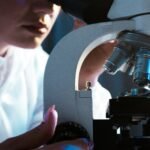Phone:
(+65)8319 0742
Emails address:
Forhad@ifafs.in

In today’s technologically advanced world, digital twins have emerged as a powerful tool for simulation, analysis, and control. Digital twins are virtual replicas that accurately represent physical objects or systems, providing a platform for studying and improving their performance. These virtual models are constantly updated with real-time data and use simulation, machine learning, and reasoning to aid decision-making.
By harnessing the power of digital twins, industries can enhance their research and development capabilities, improve efficiency, and make informed product end-of-life decisions. From engineering to automobile manufacturing, aircraft production to manufacturing operations, various industries are leveraging digital twins to optimize complex systems and processes.
Are you interested in learning more about digital twins and their applications? Let’s dive deeper into the world of digital twins and explore how they work, the different types available, and the advantages they offer.
A digital twin is a virtual model of a physical object or system that is created using real-time data from various sources, such as sensors and software. This virtual representation accurately simulates the behavior and performance of its real-world counterpart.
Digital twins serve as powerful tools for monitoring, analyzing, and optimizing the performance of physical objects and systems. They provide engineers and designers with the ability to test different scenarios, configurations, and parameters without risking any damage to the actual object or system. This allows for efficient and effective decision-making based on data-driven insights.
By leveraging simulation and real-time data, digital twins enable a deeper understanding of the underlying behavior and performance of objects and systems. This, in turn, facilitates continuous improvement, innovation, and optimization.
1. Optimization: Digital twins help optimize the performance of objects and systems by enabling detailed analysis and simulation.
2. Risk Mitigation: By allowing engineers and designers to test different scenarios virtually, digital twins help mitigate risks associated with physical prototypes.
3. Cost Savings: By identifying potential issues early in the development process, digital twins can save costs by reducing the need for physical iterations and rework.
4. Innovation: Digital twins enable experimentation and innovation by providing a platform for exploring new ideas, configurations, and possibilities without impacting the physical world.
5. Efficiency: By continuously monitoring and analyzing real-time data, digital twins facilitate proactive maintenance, optimization, and energy usage management.
As digital twin technology continues to advance, its applications across various industries and sectors are expanding. From manufacturing and engineering to healthcare and urban planning, digital twins are revolutionizing how we design, monitor, and optimize the physical world.
A digital twin works by creating a virtual model that accurately reflects a physical object. Sensors attached to the physical object collect data related to its performance, which is then relayed to a processing system and applied to the digital twin. This real-time data allows the virtual model to run simulations, analyze performance issues, and generate possible improvements. The insights gained from the digital twin can then be applied back to the original physical object, enhancing its performance.
By integrating sensors into the physical object or system, a digital twin can continuously collect data in real-time. This data is then processed and analyzed by the digital twin’s processing system, enabling simulations and performance evaluations. The digital twin can simulate various scenarios and test different configurations, helping engineers and designers identify areas for improvement and optimize the performance of the physical object.
The data collected by sensors can include parameters such as temperature, pressure, vibration, and other relevant measurements depending on the object or system being monitored. This data is crucial for understanding the behavior and performance of the physical object. It provides insights into potential issues, anomalies, and opportunities for optimization.
The processing system of the digital twin processes the collected data and applies it to the virtual model. Through advanced algorithms and analytical tools, the digital twin can simulate the behavior and performance of the physical object or system in a virtual environment. This allows for in-depth analysis, identification of bottlenecks, and the generation of recommendations for improvements.
Simulations conducted by the digital twin can range from simple what-if scenarios to complex simulations that consider multiple variables and parameters. By running simulations, the digital twin can predict how changes to the physical object will impact its performance and identify the most effective solutions to enhance efficiency, productivity, and reliability.
The insights gained from the digital twin’s simulations and analysis can then be applied back to the physical object or system. This closed-loop process of data collection, simulation, analysis, and feedback facilitates continuous optimization and improvement. It enables the physical object to evolve and adapt based on real-time data and virtual simulations, leading to enhanced performance, reduced downtime, and improved decision-making.
Overall, digital twins provide a powerful framework for understanding, analyzing, and optimizing the behavior and performance of physical objects and systems. By utilizing real-time data, advanced sensors, and sophisticated processing systems, digital twins enable engineers, designers, and decision-makers to make informed choices, drive innovation, and achieve better outcomes.
When it comes to replicating processes, both simulations and digital twins utilize digital models. However, digital twins take it a step further by creating a virtual environment, allowing for a richer study and analysis. What sets digital twins apart is their ability to benefit from real-time data and enable a two-way flow of information between the physical object or system and its virtual counterpart.
By leveraging real-time data from sensors embedded in the object or system, digital twins continuously update themselves, providing valuable insights. This exchange of data and insights helps digital twins to study and improve multiple processes, leading to greater enhancements in products and processes.
Unlike simulations, digital twins offer a more dynamic and comprehensive approach, bridging the gap between the virtual and physical worlds. They provide a realistic and accurate representation of the physical object or system, enabling a deeper understanding of its behavior and performance.
With digital twins, engineers and designers can run simulations and scenarios, analyze different configurations, and test various parameters without the risk of damaging the actual object or system. This capability allows for thorough experimentation and optimization, ultimately leading to better decision-making and continuous improvement.
Overall, the use of digital twins in combination with real-time data provides unique insights and opportunities for innovation. By leveraging the virtual model and analyzing real-time information, businesses can make informed decisions, optimize processes, and drive improvements in products and operations.
When it comes to digital twins, there are various types that cater to different levels of magnification and applications. Let’s explore them:
Component twins serve as the foundational unit of digital twins, representing individual functioning components. By closely monitoring and analyzing the performance of these components, engineers and designers can gain valuable insights for optimization and improvement.
Asset twins expand the scope by studying the interaction of multiple components within a system. They provide a holistic view of the asset’s performance and offer valuable performance data for in-depth analysis. Asset twins enable experts to make data-driven decisions to enhance performance and efficiency.
Focusing on the interaction of assets, system or unit twins enable engineers to identify and suggest performance enhancements. These digital twins provide a comprehensive understanding of how different assets work together, allowing for optimization and improved overall system performance.
Process twins take a broader view by revealing how systems work together within a production facility. By simulating and analyzing the interconnected processes, process twins enable organizations to optimize effectiveness and streamline operations for increased efficiency.
Having these different types of digital twins allows businesses and industries to deploy the most suitable twin for their specific needs, ensuring comprehensive monitoring, analysis, and optimization of physical objects and systems.
| Type of Digital Twin | Focus | Key Purpose |
|---|---|---|
| Component Twins | Individual functioning components | Monitoring and optimization of component performance |
| Asset Twins | Interaction of multiple components within a system | Holistic performance analysis and optimization |
| System or Unit Twins | Interaction of assets | Suggesting performance enhancements |
| Process Twins | Interconnected processes | Optimizing overall system effectiveness |
The concept of digital twin technology has a fascinating history, dating back to the early 1990s. Let’s take a closer look at the key milestones and pioneers who shaped the development of this revolutionary technology.
One of the earliest mentions of digital twin technology can be traced back to David Gelernter’s visionary book, “Mirror Worlds: or the Day Software Puts the Universe in a Shoebox…How It Will Happen and What It Will Mean.” Published in 1991, this groundbreaking work explored the idea of creating virtual replicas of real-world objects and systems, giving rise to the concept of digital twins.
In 2002, Dr. Michael Grieves, a professor at the University of Michigan, introduced and popularized the term “digital twin” within the context of manufacturing. Grieves recognized the value of using virtual replicas to optimize production processes, improve product quality, and enhance decision-making.
While the concept of digital twins gained prominence in the field of manufacturing, its roots can be traced even further back to the 1960s and NASA’s space exploration missions. NASA developed the idea of using virtual models to simulate and analyze the behavior of physical spacecraft and systems, paving the way for the practical application of digital twin technology.
Since then, digital twin technology has experienced rapid evolution and adoption across various industries, revolutionizing the way we study, simulate, and optimize physical objects and systems.
Table: Evolution of Digital Twin Technology
| Year | Key Milestone |
|---|---|
| 1991 | Publication of David Gelernter’s book “Mirror Worlds” |
| 2002 | Introduction of the term “digital twin” by Dr. Michael Grieves |
| 1960s | NASA’s pioneering work on virtual modeling for space exploration |
The use of digital twins offers several advantages and benefits in various industries. Let’s explore how digital twins can enhance research and development, improve efficiency, optimize product end-of-life decisions, and leverage data for better decision-making.
| Advantages | Benefits |
|---|---|
| More effective research and design | Data-driven insights for product refinements |
| Efficiency optimization in manufacturing | Streamlined workflows and cost savings |
| Insights for product end-of-life decisions | Sustainable practices and minimized waste |
| Data utilization for informed decisions | Improved business performance |
The digital twin market is experiencing remarkable growth, with a projected market value of USD 73.5 billion by 2027. Several industries, particularly those involved in large-scale projects, are leveraging digital twins to achieve unprecedented success. Let’s explore some of the industries that are at the forefront of harnessing the power of digital twins.
Engineering firms are increasingly adopting digital twins to optimize complex systems and streamline the design process. By creating virtual replicas of physical objects and systems, engineers can simulate and analyze various scenarios, allowing for data-driven decision-making and enhanced performance.
The automotive industry is leveraging digital twins to revolutionize manufacturing processes. Digital twins enable manufacturers to simulate production lines, identify bottlenecks, and optimize resource allocation. By modeling the entire production process, automobile manufacturers can improve efficiency and quality while reducing costs and time to market.
In the aerospace sector, digital twins are being used to enhance aircraft design, manufacturing, and maintenance. By creating virtual replicas of aircraft components and systems, engineers can analyze performance, identify potential issues, and optimize designs before physically producing the aircraft. This approach significantly improves efficiency, safety, and reliability.
Railcar manufacturers are harnessing the power of digital twins to optimize the design and performance of transportation systems. By simulating railcar dynamics, engineers can improve aerodynamics, energy efficiency, and overall ride quality. Digital twins enable manufacturers to deliver railcars that meet stringent industry standards while achieving cost-effective operations.
In the construction industry, digital twins are revolutionizing the planning, design, and construction of buildings. By creating virtual representations of construction projects, stakeholders can collaborate, identify potential clashes, and optimize resource allocation. Digital twins enable real-time monitoring and analysis, facilitating timely decision-making and reducing project delays and costs.
Digital twins are transforming the manufacturing landscape by enabling factories to optimize production processes, improve product quality, and reduce downtime. By simulating operations, collecting real-time data, and leveraging artificial intelligence, digital twins help manufacturers identify inefficiencies, predict maintenance needs, and ensure smooth operations.
Power utilities are utilizing digital twins to optimize the performance of energy generation and distribution systems. By creating virtual replicas of power plants and grids, utilities can analyze system behavior, predict failures, and optimize operations to ensure reliable and efficient power supply. Digital twins enable utilities to make informed decisions and improve grid resiliency.
In conclusion, the digital twin market is witnessing exponential growth, with various industries recognizing the tremendous value it offers. From engineering and automobile manufacturing to aircraft production and beyond, digital twins are revolutionizing how industries analyze and optimize complex systems and processes.
Digital twins are revolutionizing various industries, providing innovative solutions and optimizing processes. Let’s explore some of the key applications where digital twins are making a significant impact:
Digital twins play a crucial role in the power-generation sector. By creating virtual replicas of power-generation equipment, such as turbines and generators, operators can monitor real-time data and conduct detailed simulations. This enables them to identify potential issues, optimize performance, and improve overall efficiency.
Digital twins are used to enhance the design, construction, and maintenance of structures such as buildings, bridges, and infrastructure. By simulating the behavior of these structures in real-time, engineers can identify vulnerabilities, predict maintenance needs, and ensure their longevity and safety.
In the manufacturing industry, digital twins are utilized to optimize production processes and minimize downtime. By creating virtual replicas of manufacturing systems and equipment, operators can simulate various scenarios, identify bottlenecks, and implement data-driven improvements for increased productivity and cost efficiency.
Digital twins have significant applications in healthcare, ranging from personalized medicine to healthcare facility management. By creating virtual replicas of patients, medical professionals can better understand disease progression, predict treatment outcomes, and optimize patient care. Additionally, digital twins are used to simulate and optimize the design and operation of healthcare facilities, ensuring efficient resource allocation and enhanced patient experience.
Automotive manufacturers leverage digital twins to enhance the design, performance, and safety of vehicles. By simulating different driving conditions and scenarios, engineers can optimize vehicle efficiency, test new features, and improve overall vehicle performance. This leads to the development of safer, more reliable, and fuel-efficient vehicles.
Digital twins are used in urban planning to create virtual replicas of cities, enabling planners to visualize and analyze complex urban systems. By simulating the impact of proposed changes, such as new infrastructure projects or urban development plans, decision-makers can make informed choices, optimize resource allocation, and ensure sustainable and livable cities for the future.
These are just a few examples of how digital twins are transforming industries and revolutionizing various applications. By leveraging the power of detailed simulations and real-time monitoring, digital twins enable companies to achieve improved performance, enhanced decision-making, and efficient resource allocation, ultimately leading to greater productivity and success.
Digital twins have emerged as a key technology in the realm of Industry 4.0, offering virtual replicas that simulate and optimize the behavior and performance of physical objects and systems. With impressive advancements in technology, digital twins are rapidly evolving and driving growth in various industries.
Although challenges exist, the potential impact of digital twins on industries such as manufacturing, transportation, and healthcare is significant. By leveraging their ability to simulate, analyze, and optimize performance, digital twins enable companies to make data-driven decisions and enhance their processes.
Looking ahead, the future holds immense promise for digital twins. As we continue to witness technological advancements and the integration of digital twins into different sectors, they are set to play a vital role in shaping the future of the fourth industrial revolution. With the power to revolutionize product development, improve efficiency, and optimize outcomes, digital twins are poised to transform industries and drive innovation in the years to come.
Here we answer some of the most common questions about these new innovation





